Kidney Stone Removal Surgery in Pilibhit
- Home
- Departments
- Urology
- Kidney Stones
Kidney Stones
Kidney stones are solid formations composed of acidic salts and minerals.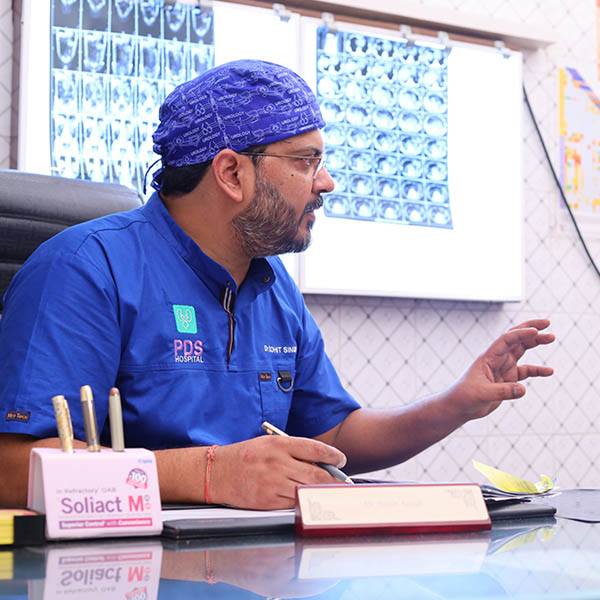
Dietary habits, excessive body weight, specific medical conditions, and the use of certain supplements and medications often contribute to the formation of solid deposits consisting of minerals and salts within the kidneys, commonly referred to as kidney stones. The minerals crystallize and bind together in the presence of urine, leading to the concentration and growth of these stones.
As kidney stones navigate through the kidney or make their way into the ureters—the tubes connecting the kidneys to the bladder—they can provoke symptoms. If a stone becomes lodged in the ureter, it can obstruct the flow of urine, leading to kidney swelling and uterine contractions. Both of these effects can result in intense pain.
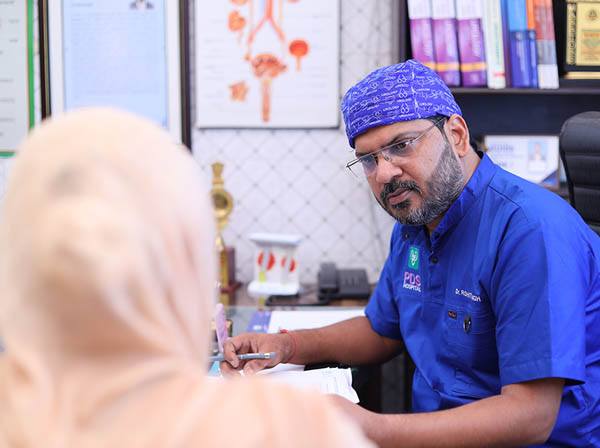
At this point of time the following symptoms are experienced:
- Severe pain the side and back, below the ribs
- Difficulty in starting urination
- Pain that radiates to the lower addomen and groin
- Pain or burning sensation while urinating
The pain induced by a kidney stone can fluctuate as it travels through the urinary tract. Its location may change, leading to variations in intensity that can either amplify or alleviate the discomfort.
Surgical Procedures for Kidney Stone Removal
1. RIRS Surgery for Kidney Stone Removal
RIRS, which stands for Retrograde Intrarenal Surgery, is an endoscopic procedure designed to eliminate kidney stones by navigating through the ureter and into the kidney. This technique employs a specialized instrument known as a fiber optic endoscope and a laser fiber called Holmium to address renal stones. After the larger stone is extracted, smaller fragments are removed using stone baskets. In certain cases, a stent might be placed in the kidney to aid in drainage.
The RIRS procedure involves the use of a laser probe to break down the stone or physical forceps to extract it. A urologist with expertise in RIRS administers this medical intervention.
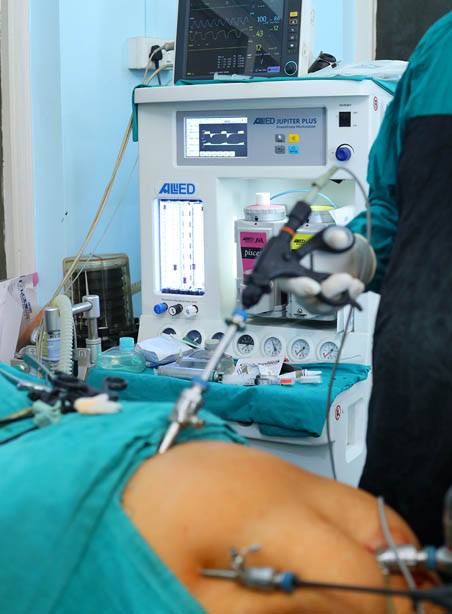
The patient is administered spinal or general anesthesia to induce sedation, and then the endoscope is introduced through the urethra and directed into the kidney. Notably, this surgery is minimally invasive and does not necessitate any incisions, resulting in a swift recovery period. RIRS demonstrates its capability to effectively address a significant proportion of renal stones without resorting to open surgery. Continual breakthroughs in renal stone treatment have firmly established RIRS as a dependable, safe, and efficient therapeutic approach.
The principal objective of treating renal stones is their complete elimination with minimal discomfort. RIRS accomplishes this by employing flexible ureterorenoscopy and lithotripters, such as the holmium laser, to obliterate the stones completely. Innovations in associated equipment like control wires, ureteral access sheaths, and stone baskets have bolstered the practicality of the RIRS procedure. As of now, RIRS is considered the standard of care for renal stones measuring less than 2 cm in diameter that cannot be adequately managed through alternative methods.
The Surgery's Benefits:
- Invasive to the bare minimum
- A simple and time-saving way
- Less morbidity.
- Inconsequential bleeding
- No risk to the renal tissue.
- Less inconveniences.
2. PCNL Surgery for Kidney Stone Removal
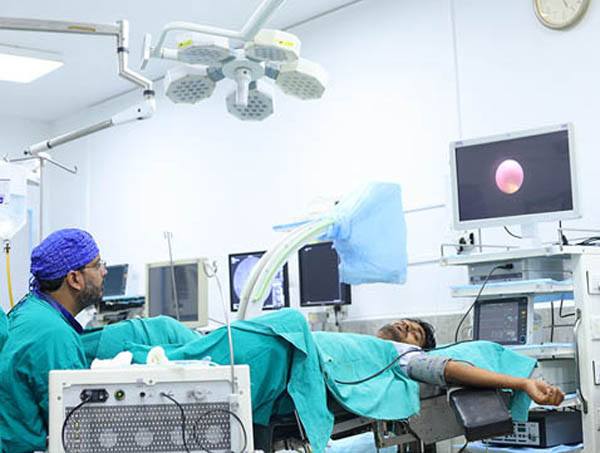
The urologist employs the Percutaneous Nephrolithotomy (PCNL) approach to create a 1cm entry point in the rear or side of the abdomen. Through this incision, a nephroscope is introduced into the region containing the stone. For smaller stones, physical fragmentation can often be accomplished at this stage. In cases of larger stones, ultrasonic, electrohydraulic, or laser-equipped probes may be employed to disintegrate the stones before their removal (referred to as PCNL with laser lithotripsy). A tube, known as a catheter, may be positioned within the kidney to facilitate waste collection.
This medical procedure is recommended as the preferred course of treatment if you are dealing with multiple kidney stones, kidney stones larger than 2 cm, or upper ureteric stones exceeding 1 cm in size.
When conventional methods for kidney stone removal, like ureteroscopy (mentioned below) or ESWL (Extracorporeal Shock Wave Lithotripsy), have proven unsuccessful, PCNL serves as an alternative option. Renal stones that exhibit resistance to fragmentation (with Hounsfield units surpassing 1000 HU) are also well-suited for PCNL intervention.
Furthermore, this procedure finds application when various treatment modalities, including medical management and ESWL, among others, have proven ineffective in addressing renal and upper ureteric stones.
3. Mini PCNL Surgery for Kidney Stone Removal
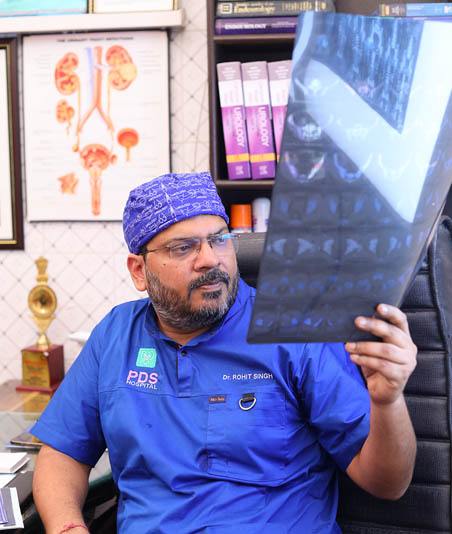
Mini-PCNL (minimally invasive percutaneous nephrolitholapaxy) is an endoscopic technique designed for the extraction of kidney stones. To minimize the procedure's impact on the patient, Mini-PCNL employs a 12-14F nephroscope and a 15-18F Amplatz sheath, in contrast to the larger 24-30F sheaths employed in traditional PCNL procedures. With the integration of smaller cameras, more precise stone lasers, and specialized instruments, mini-PCNL represents a refined approach to the process.
Individuals with kidney stones of intermediate size, slightly larger than one centimeter but not occupying the entire kidney, are prime candidates for mini-PCNL. The reduced scale of the procedure diminishes the risk of organ damage. Compared to other treatment options, patients undergoing mini-PCNL have a greater likelihood of achieving complete kidney stone removal, rendering it a superior choice for such cases.
General & Lap. Surgery
Headed by Dr. P. D. Singh, one of the finest surgeon in the region for General & Laparoscopic Surgeries with best in class and advance equipment.
Urological Surgeries
Dr. Rohit Singh at P.D.S. Hospital performs highly advanced urological procedures in the Kamayun and Rohilkhand region.
Training Programs
Our aim is to educate the new and practicing doctors, in various specialties, like laproscopic surgeries and urology related surgeries.
